We may receive a commission when you use our affiliate links. However, this does not impact our recommendations.
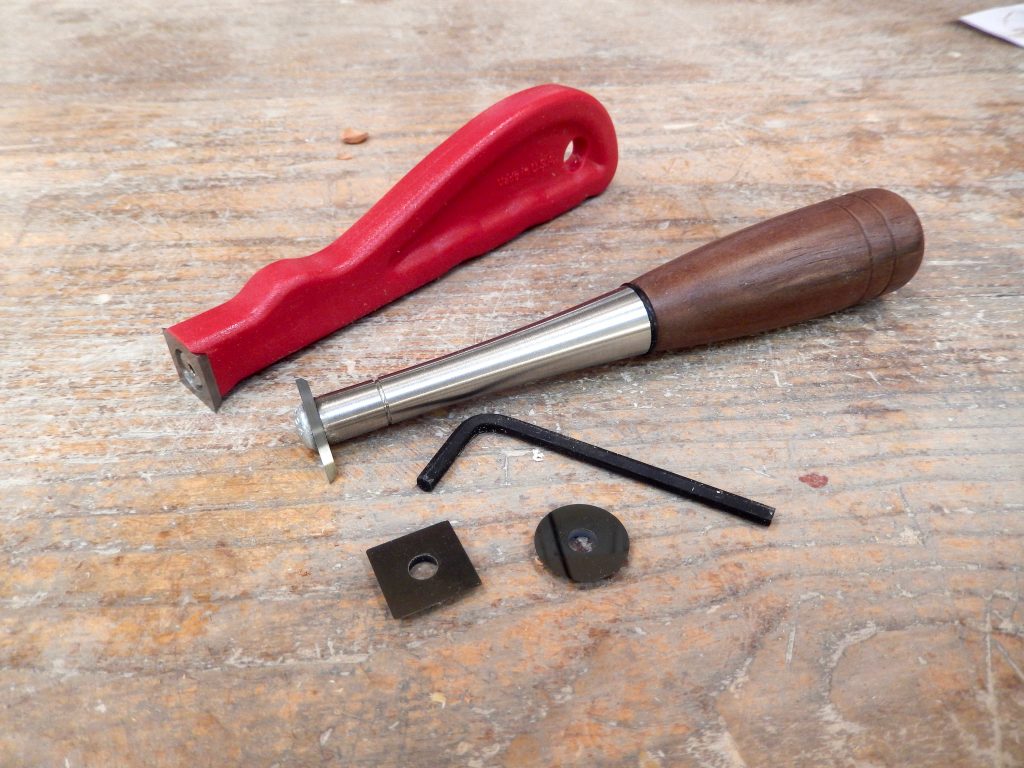
A small carbide scraper is a very handy tool. It will help you scrape off old finish from moldings, rabbets and beads in restoration work, and is useful in cases when you need to remove glue leftovers from joined-together parts.
Whenever we visit our friends in Toronto, I always make sure to stop by at least one of the three Lee Valley stores in town. This month as we headed North I came up with a really good excuse to jump on the streetcar to visit the downtown Toronto store: I wanted to look at and perhaps even buy one of the most recent products from Lee Valley – a small carbide scraper (Read more about my trip to the King Street store below). The new carbide scraper-set includes a handle and three different blades: square, round and triangular.
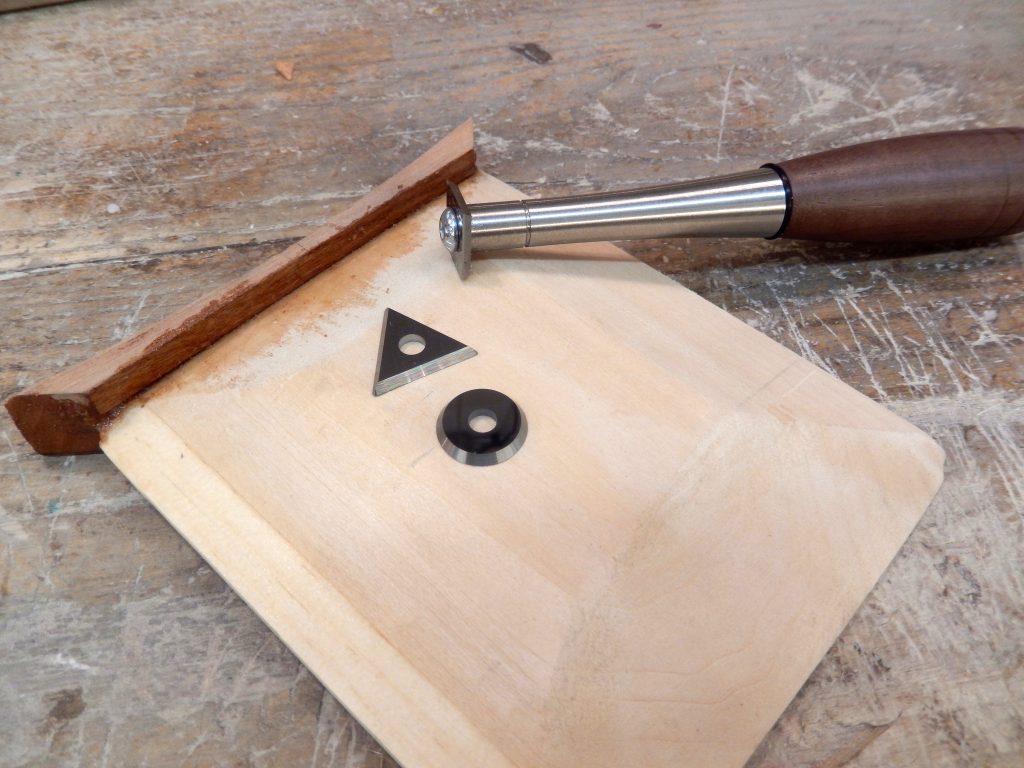
Small carbide scrapers can be quite handy in any shop, from scraping off glue leftovers, to shaving thin layers of wood, to achieving a smooth surface in places where a card scraper or sandpaper can’t reach.
In this blog entry I will compare the two scrapers that I bought recently: The Woodpeckers New Mighty Mini Scraper and the Lee Valley Detail Hand Scraper.
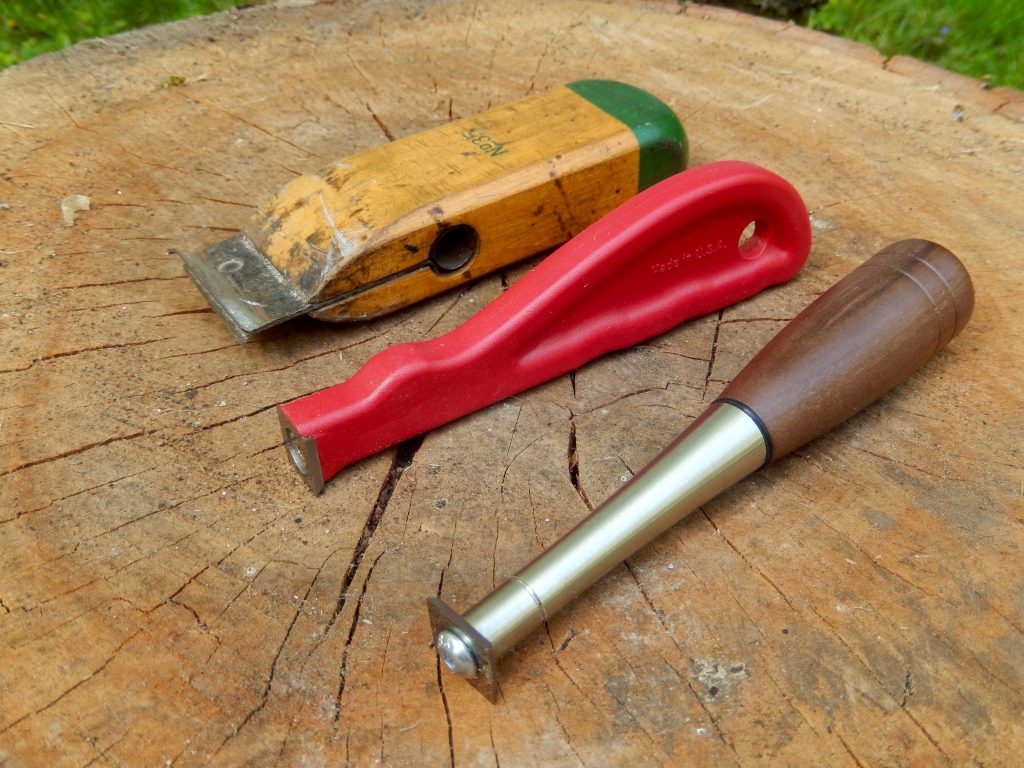
A group of small scrapers. From top to bottom: An old High-Carbon steel painters scraper, Woodpeckers small scraper and the new scraper from Lee Valley.
Uses for Small Scrapers
Although I always instruct my students to clean any yellow glue leftovers with a rag and water immediately after clamping the parts, I find that we often have to contend with beads of dry wood glue that were not completely cleaned. Furthermore, when using epoxy or polyurethane adhesives I actually tell to my students to leave the squeezed-out glue put until it is completely cured, and not attempt to remove it (water will not work here and I choose not let them use solvents, etc). A scraper which allows us to cleanly remove the extra glue is therefore a very handy tool.
Comparing the Two Scrapers
The Woodpeckers New Mighty Mini Scraper (NMMS) is very handy for flat-surfaced joints and for right-angle corners. It can be tucked right into the ninety-degree corner and be pushed towards the glue beads (like a bulldozer) to break them off, or pulled to shave the fibers, which achieves a smoother surface.
The NMMS carbide blade is slightly cambered and feels very sharp. I believe that Woodpeckers uses an industry carbide insert and that they also incorporate it on their well-made wood turning tools (we have one of their turning tools in our shop). The insert is indexed (each of the four edges is denoted with a number) so you can progressively rotate it as the blades get dull and identify the next-sharpest edge to use. The carbide blade is mounted via a positive stop to prevent insert drift, and is clamped down via a flat head socket hex screw that is tightened and flush with the surface of the blade.
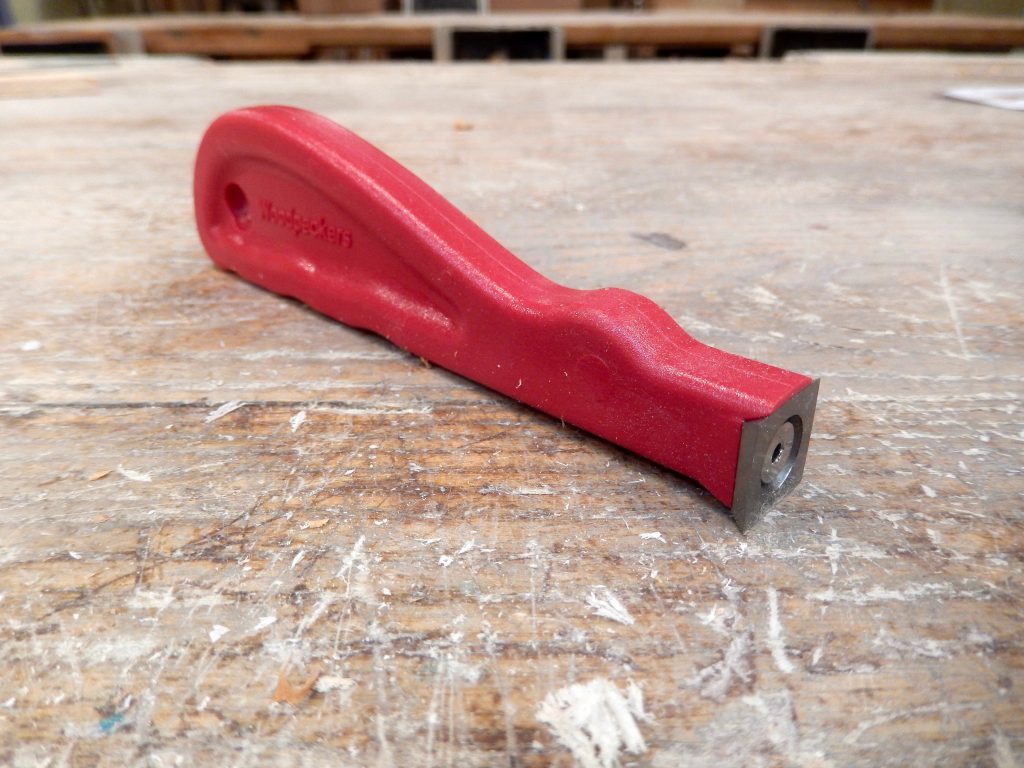
The fiberglass-reinforced plastic handle of the Woodpeckers New Mighty Mini Scraper is fitted with a brass insert that accepts the mounting screw.


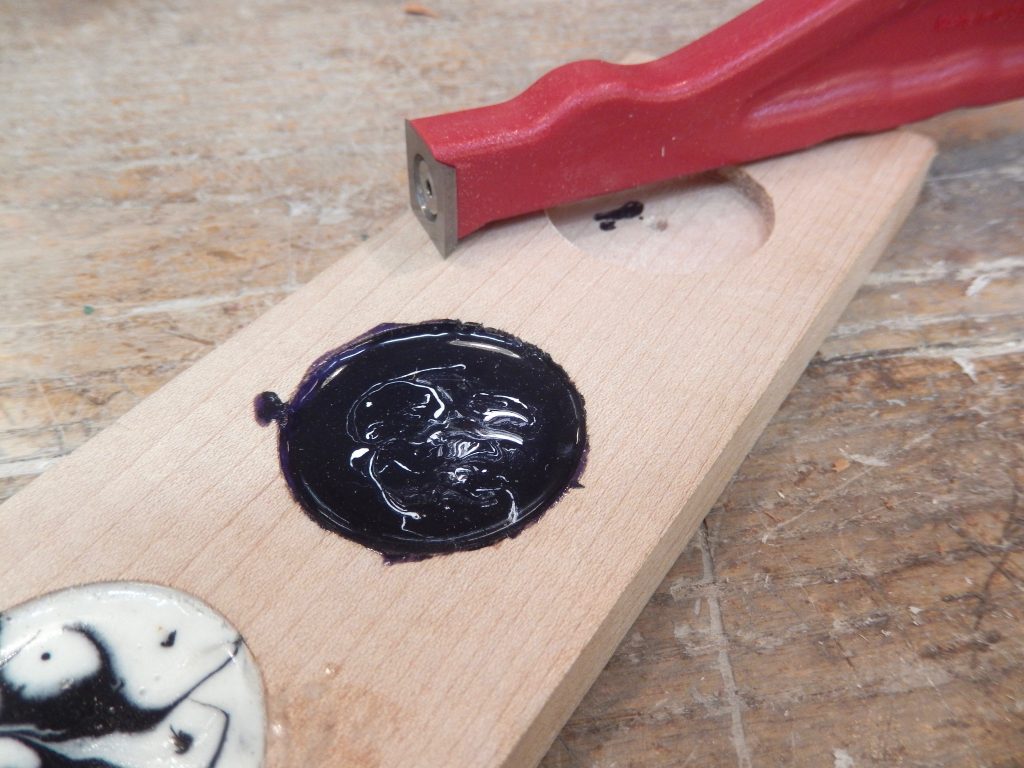
The Woodpeckers scraper is fantastic for flat surfaces. Here we scrape off excess epoxy at the rims of an experimental decorative medallion. While working on their box projects, many of my students decide to “play” (or “paint”) with cast epoxy to decorate their box’s lid. This technique deserves further explanation so I might dedicate a few blog posts to it in the future.



The Lee Valley Detail Hand Scraper (DHS) is a more versatile tool, due to the three different inserts you can attach to it’s beautiful steel and wood handle. The square, round, and triangle carbide inserts will allow you use it in the most demanding and unusual of locations where a lone insert scraper can’t fit. For instance, in my box-making class we use epoxy to glue the box’s beveled sliding lid to a pull/push ledge. The Lee Valley scraper with a triangular insert proved to be the most effective tool to scrape the oozed-out epoxy in that joint.
The DHS inserts are not indexed and do not have a countersink mounting hole. Therefore, if you want to use one edge at a time until it gets dull, you will have to mark it accordingly. The mounting screw on the DHS is a round-headed hex screw (10-32 thread). That means that the tool is incompatible with most street-brought carbide inserts (the ones with countersink holes). Why would I want to use a street-bought insert on the DHS? Because many of those carbide inserts are produced with a slight camber to their edges, and scraping with a cambered edge can be advantageous in many situations. Therefore, if you want to enhance the capabilities of the Lee Valley tool even further, consider getting a 10-32 thread, socket flat head hex or torx screw.

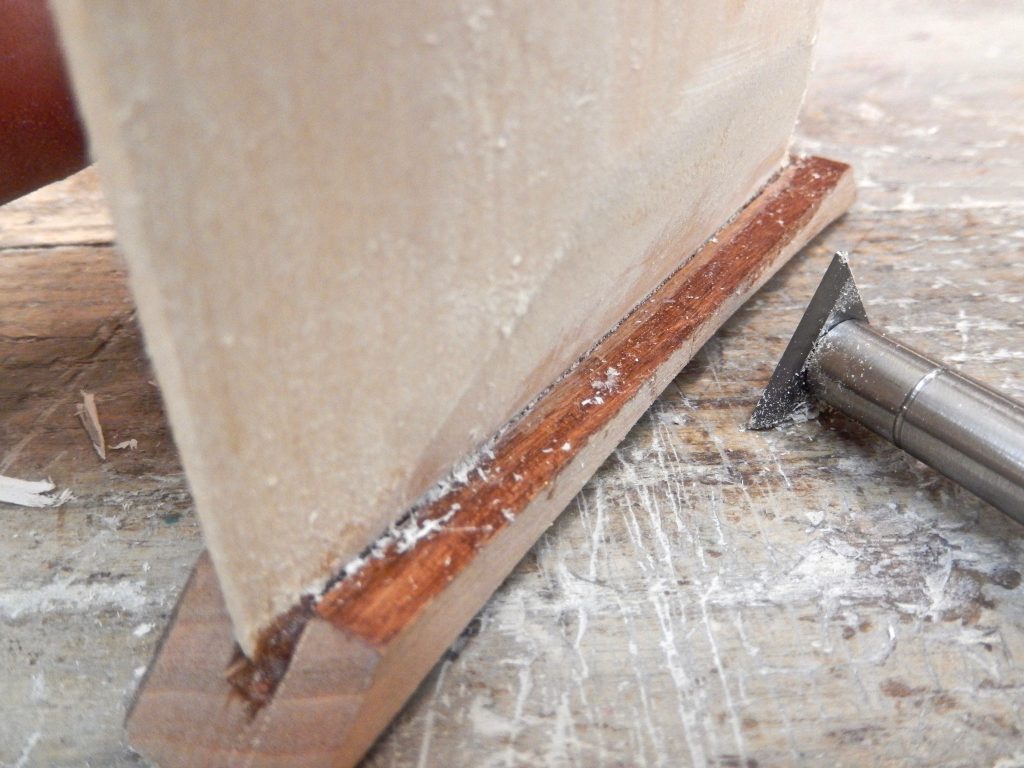
With a triangular insert the Lee Valley tool works miracles, even on the toughest of adhesives.


Using the Woodpeckers scraper in this situation proved to be less effective.
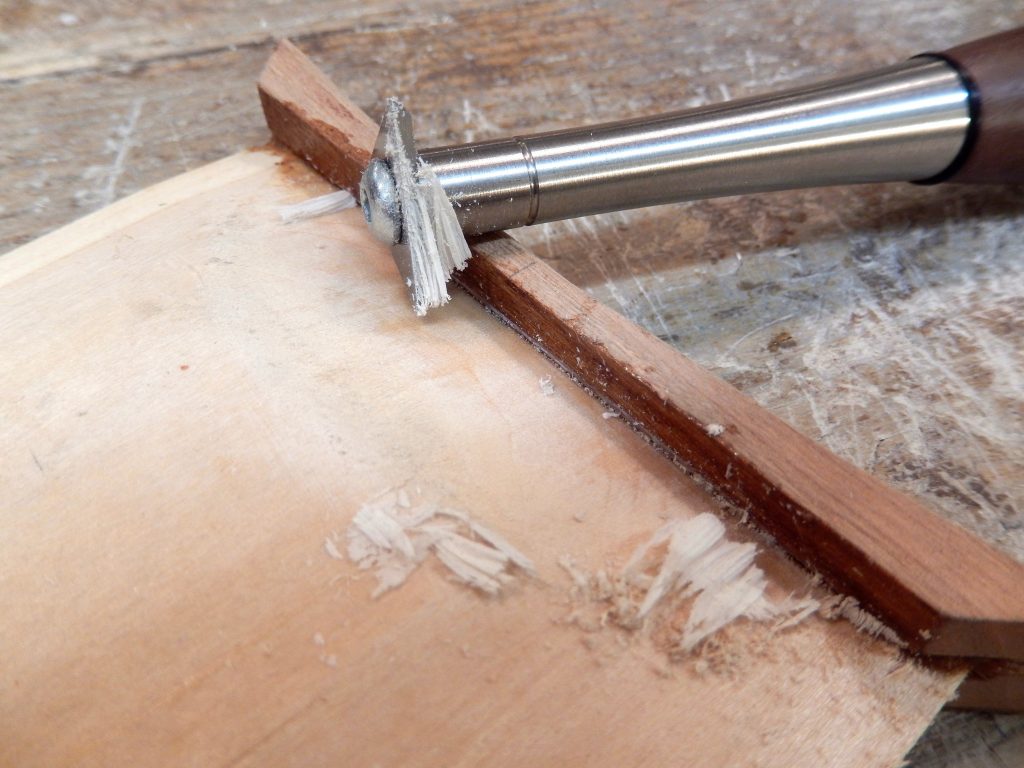

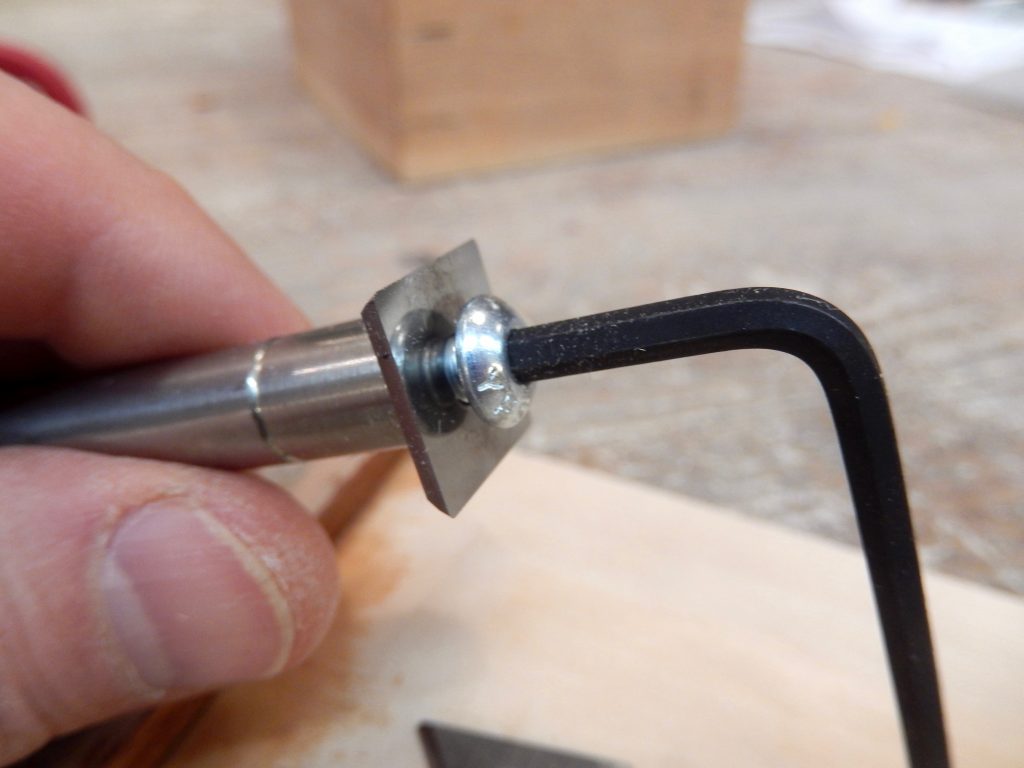
It would be nice if Lee Valley decided to provide a complementary flat head screw to allow users to mount generic countersink carbide inserts. This is especially useful since the square insert that comes with the tool has straight edges, whereas a cambered insert would be preferred for some applications.
Prices: The DHS is currently sold for $32 (until July 1st) . The NMMS is sold for $21.
Here is a sort-of promotional video on the Woodpeckers New Mighty Mini Scraper.
A Visit to a Lee Valley Store

Like all Lee Valley stores, the one that I visited in downtown Toronto adheres to the company’s tradition of order-form shopping. That means that instead of being able to pick the item from a shelf or rack to evaluate it, you actually have to fill out a form and request that the item be brought to you at the clerk’s counter from the store’s inventory.
Although some popular items (and less expensive) are stacked on shelves for immediate purchase, Veritas tools and I believe also the majority of what you see in the Lee Valley woodworking catalog is displayed behind glass vitrines. The store’s “delayed touch & gratification policy” can be hard on some of us, but I believe that Lee Valley has some good reasons to maintain this shopping method and store layout.
I speculate that part of the reason is because Lee Valley, and a few other high-end companies such as Starrett, still keep to the old-fashioned way of cardboard and paper packaging. Thankfully they have not turned to the dark side of the modern clamshell (plastic) packaging, which is so bad to the environment. But unfortunately, cardboard and paper packaging comes with a price. It is harder to protect the packages from being pried open and the items from being mishandled or worst, being stolen. Opening an expensive tool in front of a store employee is therefore safer for the product, plus it allows you to ask the Lee Valley employee all the questions you have on it and on other items. And as a customer, you want to know for sure that the item that you are about to buy is undamaged, guaranteed to have all its parts, instruction sheets, etc., and is in mint condition.


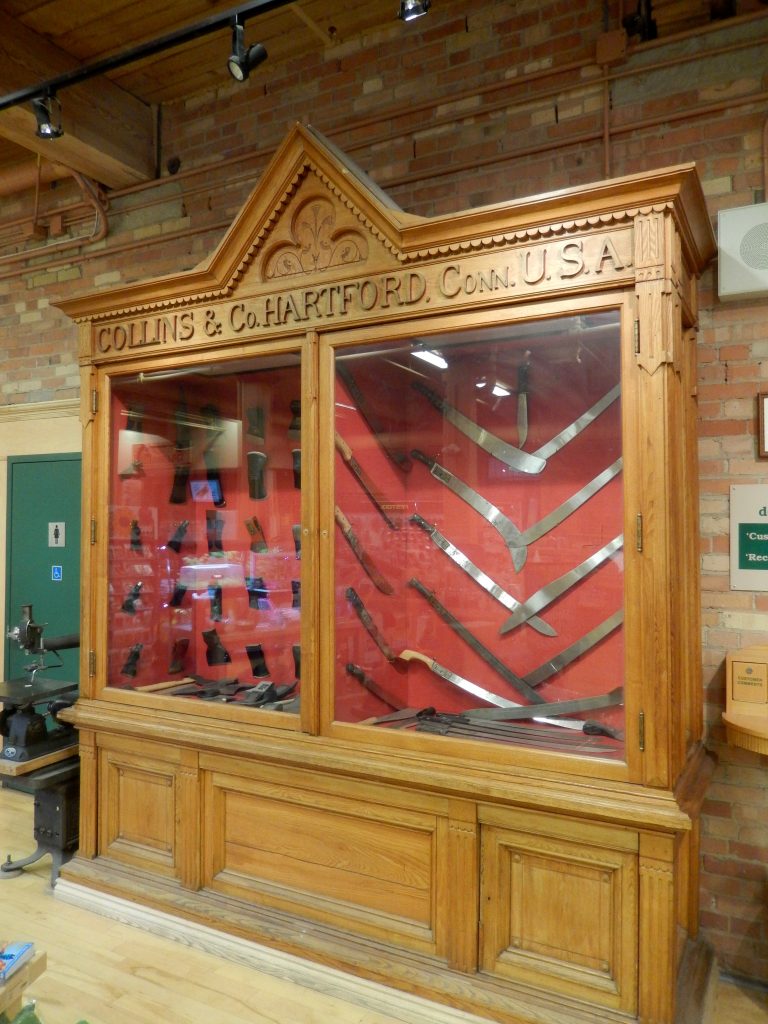
A magnificent display case showcasing a plurality of axes and other bushcraft tools by Collins & Co. A century ago it was customary for many hardware and General stores to use protective glass cases to house items for sale or on display. Today this practice is reserved for the most precious or the most at-risk items.

Here are some supplies and tools we find essential in our everyday work around the shop. We may receive a commission from sales referred by our links; however, we have carefully selected these products for their usefulness and quality.








